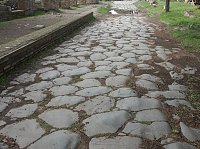
|
The Via OstienseThe ancient Roman town of Ostia was linked to Rome by this street. The town, named from the Latin "ostium" for "mouth," was located close to where the Tiber River empties into the ocean (closer to the coast than today since the river has deposited silt thus extending the distance to the shore). The city was the port for Rome, the landing point for cargo as well as war ships. The city has a long history from Republican times until the fall of the Empire. Excavations of the ruins of this ancient city began in the mid-nineteenth century and continues yet today. The tombs, some damaged by tomb-robbers or worn by time, are outside the city walls in the large necropolis, or city of the dead, which is adjacent to the main road into the city. |
| |
|
Views of some of the tomb walls |
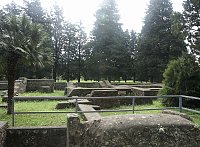
|
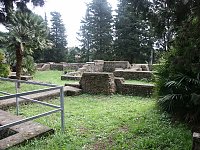
|
| |
|
Ruins of structures outside the city walls |
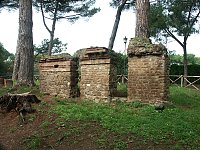
|
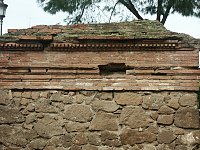
|
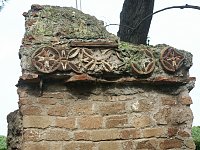
|
| |
|
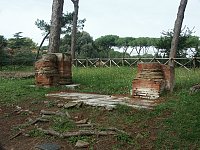
|
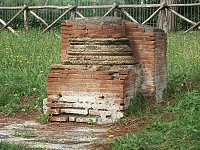
|
|
| |
|
|
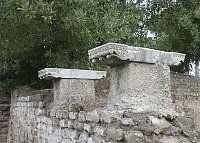
|
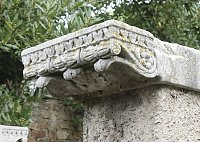
|
| |
|
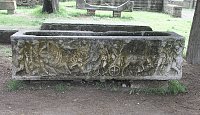
|
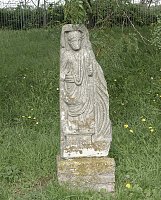
|
Sarcophagus (one of many empty and/or damaged ones) and statue |
| |
|
Remains of tomb wallsScholars hae difficulty dating these tombs, partly because some of constructed or material used earlier. Some tombs are columbaria with niches for the vases containing the ashes from cremation. Later tombs are of the arcosolium style (from the Latin "arcus" for "arch" and solium for "a sarcophagus"), a term applied to an arched recess where the wrapped corpse was placed. Few inscriptions remain. The tombs walls are built in a variety of Roman building styles: Opus reticulatum or small tufa blocks laid diagonally although windows or doors may be framed with oblong bricks for reinforcement. See right below. If the recticulate masonry is intersected by wide bands of bricks laid horizontally, it is called "opus mixtum." See center below. Scholars can often date the tombs based on the masonry style.
|

|

|
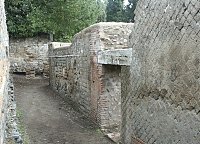
|


 Click here to return to index of art historical sites.
Click here to return to index of art historical sites.
 Click here to return to index of artists and architects.
Click here to return to index of artists and architects.
 Click here to return to chronological index.
Click here to return to chronological index.
 Click here to see the home page of Bluffton University.
Click here to see the home page of Bluffton University.

